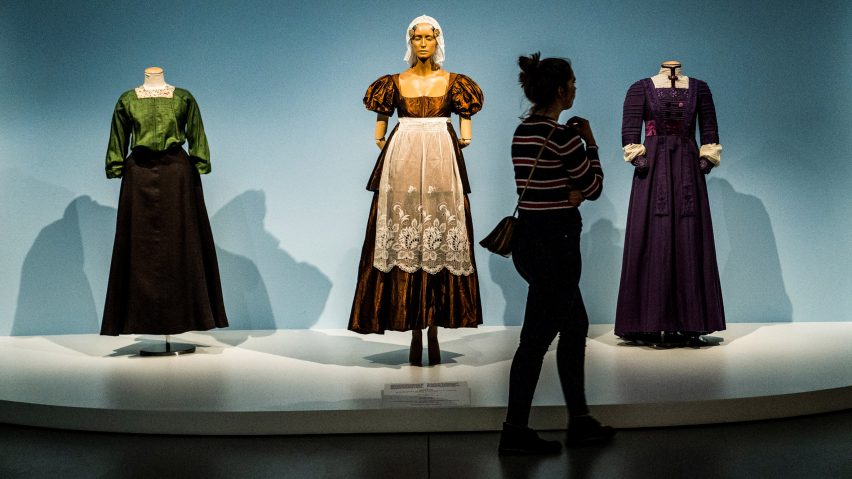
Struggle! 100 Years of Women's Suffrage exhibition curator picks five highlights
An exhibition at the Groninger Museum in the Netherlands celebrates 100 years of universal voting rights in the country. Co-curator Egge Knol picks five objects that tell the story.
In the Netherlands, as in so many countries, it took years of tireless campaigning to change the law to allow women to vote.
The Dutch parliament finally passed a law for women's suffrage on 9 May 1919, but the fight began at the end of the 19th-century, with women creating banners, pins and leaflets to publicise their mission.
"Women had to get organised," explained Knol to Dezeen. "To demand attention for their cause, they held street protests and started petitions."
Rallies supported by Dutch artists
The rallies were supported by a number of Dutch artists, who designed badges and symbols that were subsequently used all over the world, such as the International Woman Suffrage Alliance (IWSA) pin with the words 'Jus Suffragii' designed by Johanne Pedersen-Dan.
Other campaign material used to advocate for the cause in the Netherlands included posters and doctored postcards of popular paintings with a political message.
The city of Groninger played a role, as the home of key activist and doctor Aletta Jacobs. Fittingly, the museum has gathered paintings, banners, photographs, cartoons and historical documents that show how Jacobs and her fellow campaigners used visual material to send their message.
Struggle! 100 Years of Women's Suffrage runs at the Groninger Museum until 15 September 2019.
Here, Knol tells the story of women's suffrage in the Netherlands through five highlights from the show:
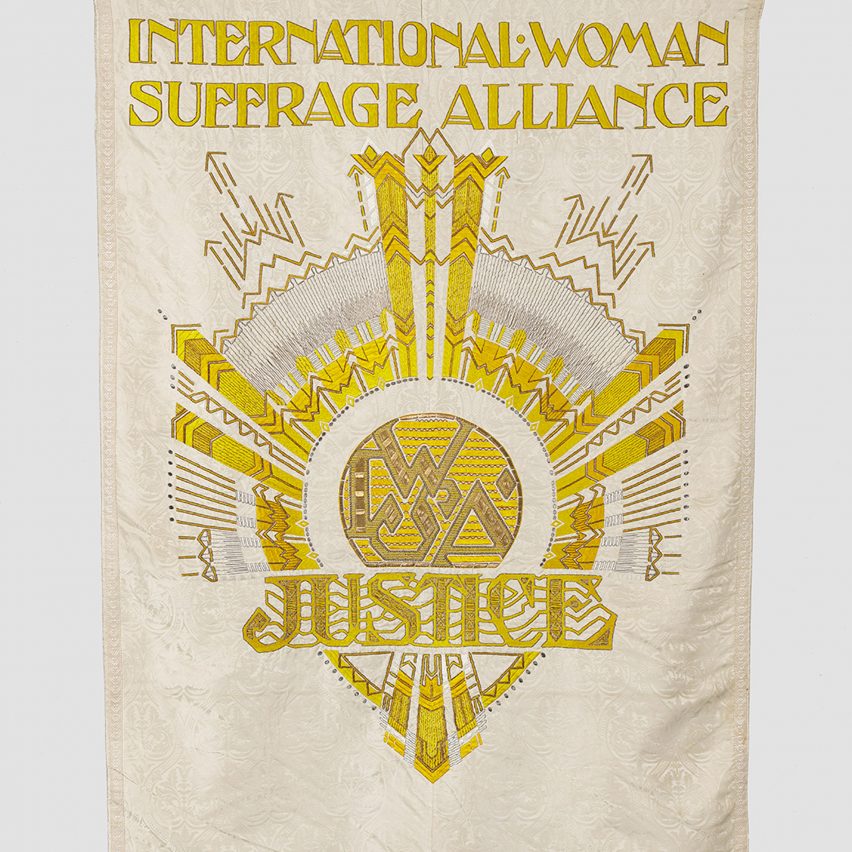
Banner, International Woman Suffrage Alliance
"On the occasion of its 1911 convention in Stockholm, the International Woman Suffrage Alliance received a banner designed by Swedish designer Eivor Hedvall, manufactured by the renowned textile atelier Licium in Stockholm.
"It is made of white silk, and the golden yellow and silver embroidery shows the abbreviation 'IWSA' and the word 'Justice' in front of a rising sun.
"The banner's main colours, white and golden yellow, were adopted by the international women's suffrage movement. Designs of banners elsewhere, in Sweden and in the Netherlands for example, applied the same colours. The banner is still used by the International Women's Alliance."
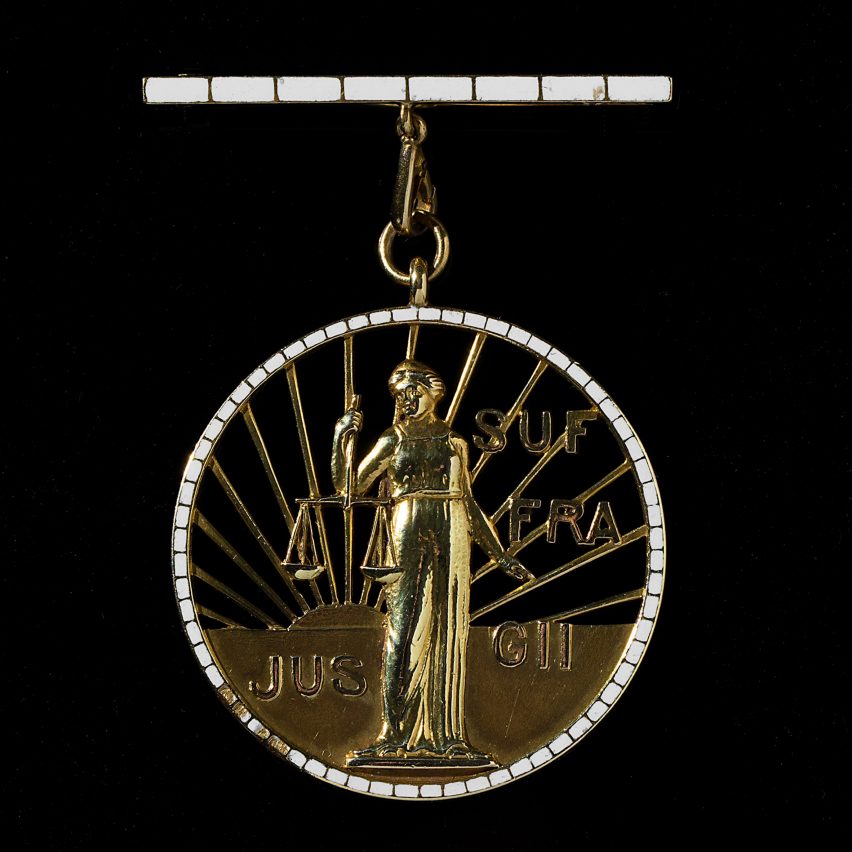
Badge, International Woman Suffrage Alliance
"In 1906, Danish artist Johanne Pedersen-Dan designed a badge for the International Woman Suffrage Alliance. It shows a Figure of Justice, without a blindfold, in front of a rising sun and accompanied by the words 'Jus Suffragii', meaning 'the right to vote' in Latin.
"The badge was popular in the Netherlands and has been produced in the form of brooches and banners, printed in magazines and even used on a tombstone.
"The eminent women's suffrage campaigner Aletta Jacobs was awarded with this golden medal in February 1919 on the occasion of the 25th anniversary of the Dutch Women's Suffrage Association. The medal can be removed from the clip to be worn as a pendant, as Jacobs often did."
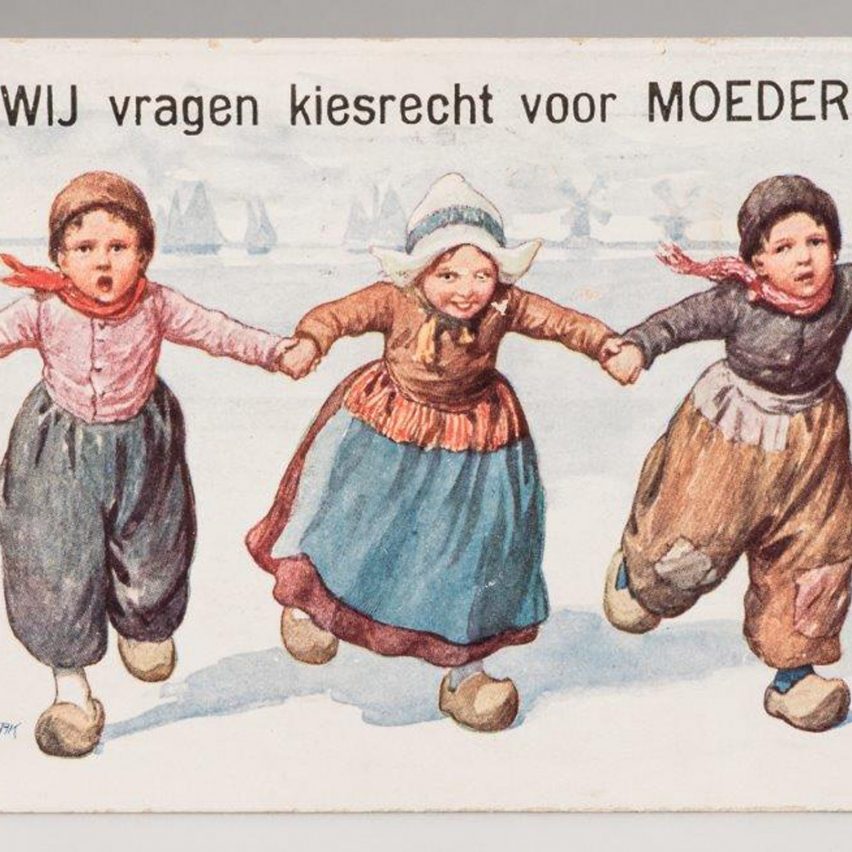
Postcard
"This postcard displaying three Dutch children on wooden shoes was made by the Austrian artist Karl Feiertag. It has been turned into suffrage propaganda by the addition of the sentence above, which translates as 'We request suffrage for mother'.
"Postcards were very popular in the first two decades of the 20th century. The women's suffrage movement reprinted such pictures and cartoons, sometimes adding their own aphorisms, to use them in their campaign. Feiertag was known for his postcards of children in traditional costumes."
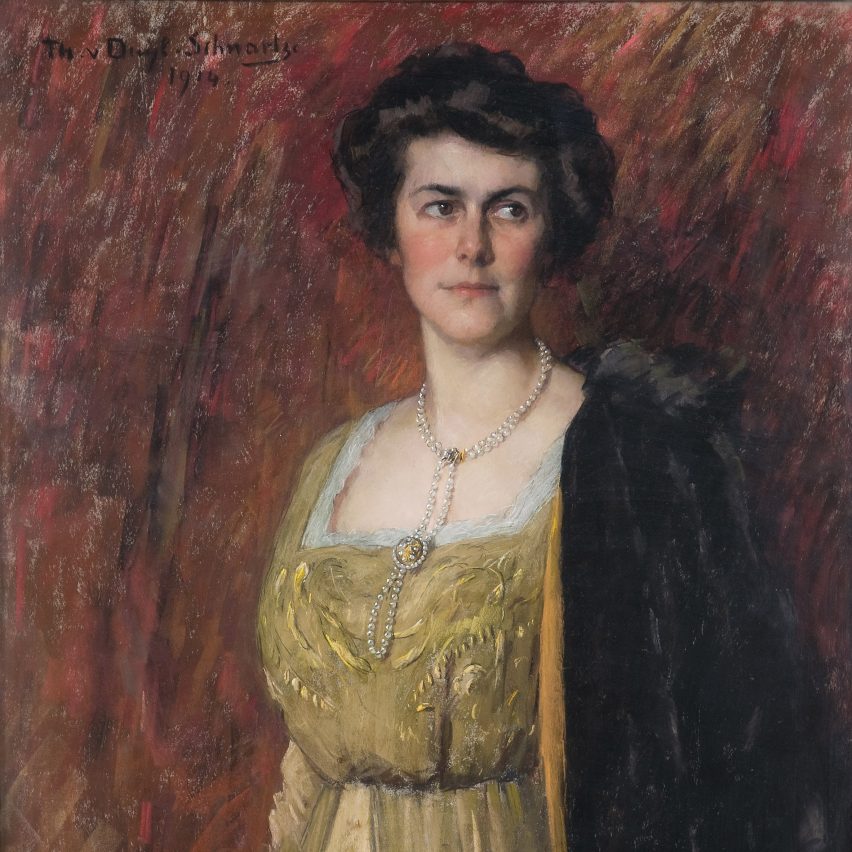
Portrait of Maria Boissevain
"This portrait displays the Dutch biologist and women's suffrage campaigner Maria Boissevain.
"On the occasion of the 100th anniversary of the liberation of the Kingdom of the Netherlands from French occupation, together with feminist Rosa Manus, she organised the important 1913 exposition De vrouw 1813-1913 (The woman 1813-1913), showing all aspects of being a woman. It included a room dedicated to women's suffrage.
"This portrait was a gift in recognition of her contribution to this exposition."
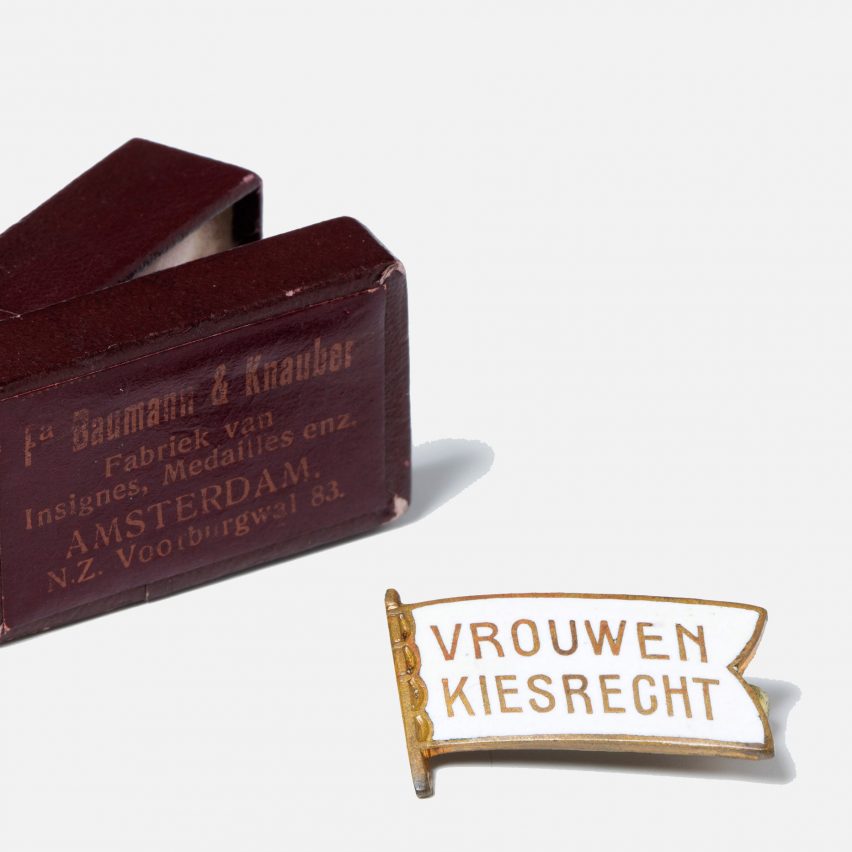
Pin, Dutch Womens Suffrage Association
"This pin of the Dutch Women's Suffrage Association, dating from 1908, once belonged to GM Hartsema, from the village of Hoogkerk, near Groningen.
"This brass and enamelled pin, made by Bauman & Knauber in Amsterdam, was worn by supporters of women's suffrage in the Netherlands.
"Similar pins were made in America, by the Whitehead & Hoag Company in Newark, inscribed with the words 'Votes for Women'. The pin is executed in white and golden yellow: the colours of the international women's suffrage movement."